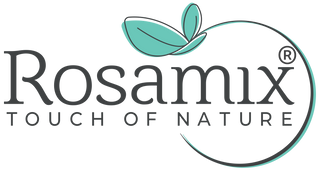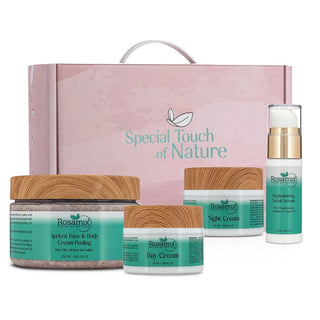Skin Care Kit
1) DAY CREAM:
Discover the versatile care of our Day Cream, which is carefully crafted to hydrate your skin and shield it from harmful environmental factors. This unique formula combines sunscreen with a rich blend of pomegranate oil, hemp seed oil and shea butter to nourish and protect your skin throughout the day.
Key Benefits and Features:
-
Moisturizing: Enhances skin hydration, leaving it smooth and supple.
-
Sun Protection: Provides a protective barrier against harmful UV rays.
-
Antioxidant-Rich: Pomegranate oil helps brighten the skin and reduce the appearance of pigmentation spots.
-
Nourishing Ingredients: Hemp seed oil and shea butter deliver essential nutrients, boosting skin elasticity.
-
Perfect Makeup Base: Absorbs quickly, prepping the skin for makeup without any greasy residue.
Ideal for daily use on the face and neck, this day cream is suitable for all skin types. Apply a small amount to cleansed skin and gently massage in. The hemp seed oil in the formula is packed with valuable vitamins and unsaturated fatty acids to deeply nourish and care for your skin. Pomegranate oil, rich in antioxidants, helps protect and brighten, while shea butter and jojoba oil enhance skin elasticity and provide additional protection against environmental stressors.
Experience the comprehensive benefits of this day cream and enjoy the lasting hydration and protection your skin needs all day long.
2) NIGHT CREAM:
Experience the nighttime rejuvenation of your skin with Rosamix Night Cream. This luxurious cream combines the nourishing properties of shea butter with a blend of advanced ingredients to tighten and enrich your skin. Suitable for both face and neck, this night cream provides full care for all skin types.
Key Benefits and Features:
-
Regenerative Effect: Promotes nighttime skin regeneration, leaving your skin refreshed by morning.
-
Firming Care: A complex of advanced ingredients tightens the skin and enhances its elasticity.
-
Nutrient-Rich: Enriched with shea butter, providing the skin with healthy fats and maintaining its elasticity.
-
Antioxidant Properties: Pomegranate oil, rich in antioxidants, helps brighten the skin and reduce pigmentation.
-
Suitable for All Skin Types: Gentle enough for every skin type, offering comprehensive anti-aging care.
3) REPLENISHING FACIAL SERUM:
Discover the intensive care and rejuvenation of your skin with our replenishing face serum. Enriched with a unique blend of precious oils, including pomegranate oil, hemp seed oil, olive oil, and rose oil as well as Vitamin E, this serum offers comprehensive protection and revitalizes your skin. Suitable for all skin types, this face serum promises high-quality care without compromise.
Key Benefits and Features:
-
Deep Regeneration: The powerful combination of pomegranate oil and hemp seed oil promotes skin regeneration, giving you a youthful and radiant complexion.
-
Protection and Nourishment: Vitamin E and olive oil provide antioxidant protection and intensely nourish the skin, preventing dryness and strengthening the skin barrier.
-
Enhanced Elasticity: Rose oil supports the production of elastin and collagen fibers, making the skin appear more elastic and refreshed.
-
Nutrient-Rich Formula: Packed with vitamins and essential fatty acids, this serum supplies the skin with vital nutrients, promoting overall skin health.
-
Suitable for All Skin Types: The serum is gentle enough for every skin type, offering versatile benefits that calm and revitalize the skin.
4) APRICOT FACE & BODY CREAM PEELING:
Discover the rejuvenating benefits of our Apricot Face & Body Scrub Cream. Expertly crafted with finely ground apricot kernels and a luxurious blend of sweet almond, castor and sunflower oils, this peeling cream gently exfoliates dead skin cells and impurities while nourishing and soothing your skin.
Key Benefits and Features:
-
Gentle Exfoliation: Effectively removes dead skin cells and impurities, leaving your skin soft and smooth.
-
Nutrient-Packed: Infused with hyaluronic acid, shea butter, and vitamins E and C for deep hydration and nourishment.
-
Natural Oil Blend: Enriched with sweet almond, castor, sunflower, and Galilean olive oil to maintain skin's elasticity and suppleness.
-
Skin Renewal: Promotes skin regeneration, resulting in a radiant and healthy complexion.
-
Multi-Purpose: Suitable for both face and body, providing comprehensive care and a refreshing experience.






